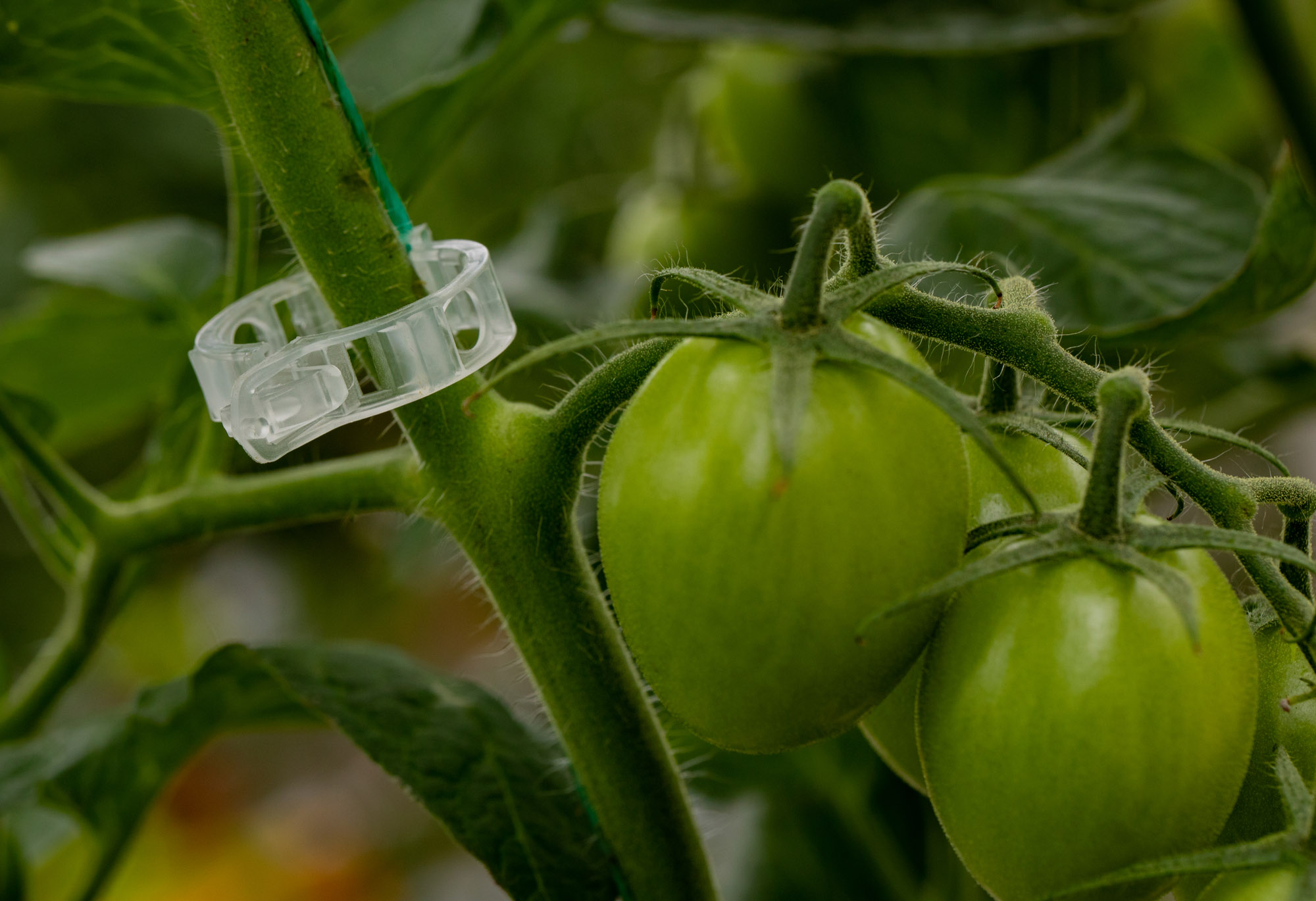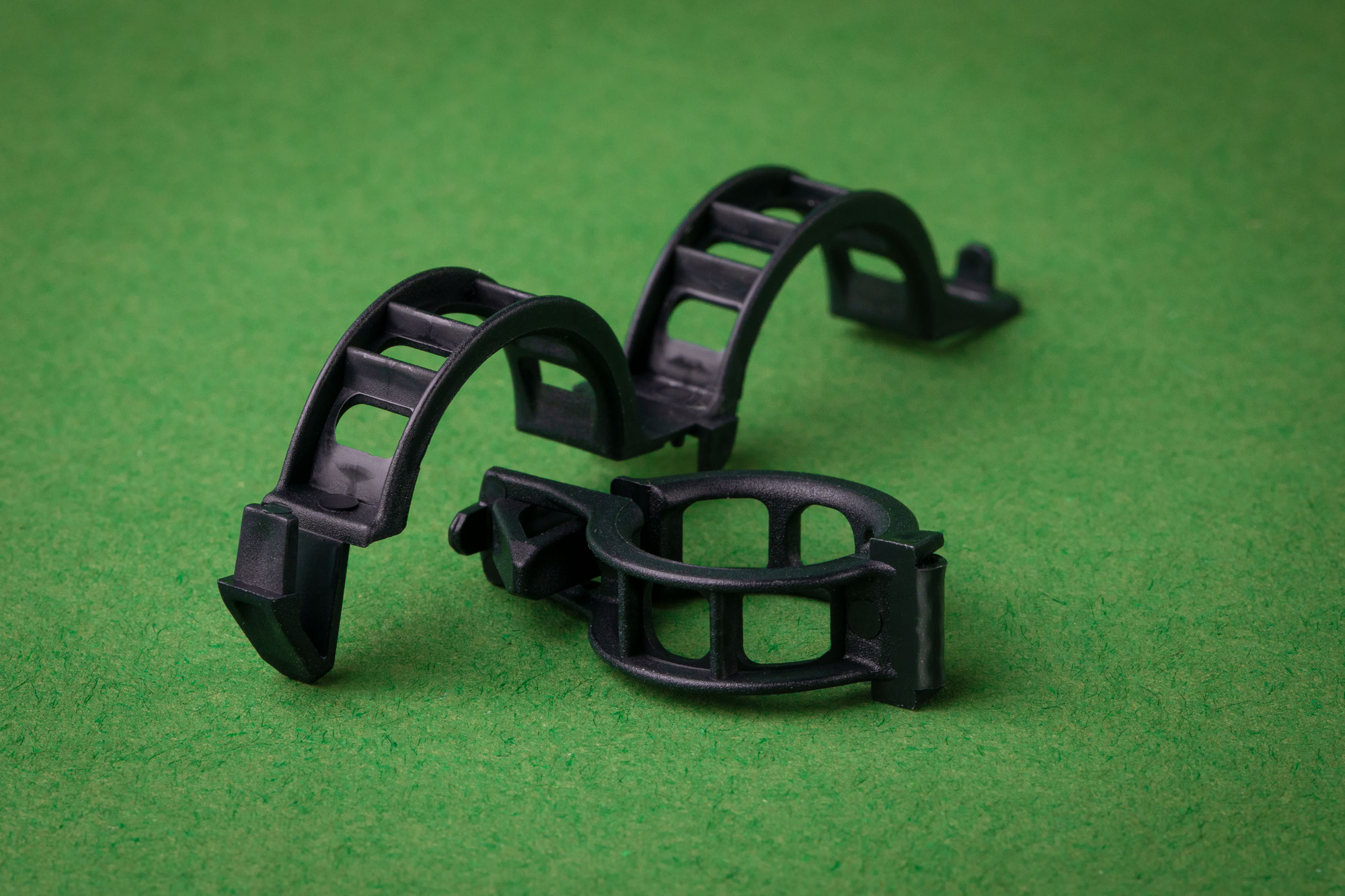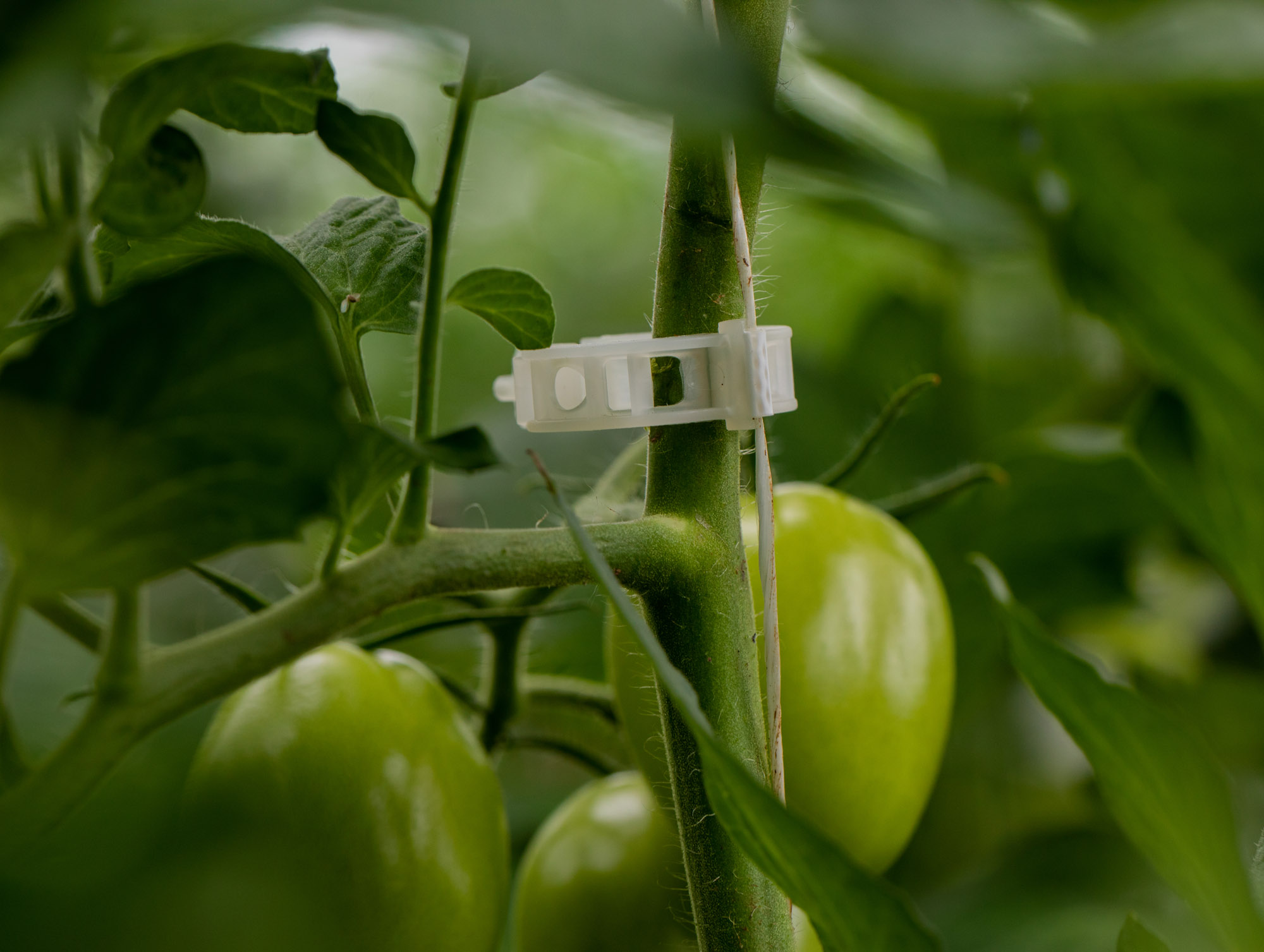)
Tomato clips for tomato cultivation
Tomato clips for tomato cultivation in greenhouses
In greenhouse environments, we always want crops to grow in height. If we didn’t, we would need a lot more m2 , and that is not a sensible solution. So the aim is always to support crops in their vertical growth. There are two different ways to support crops in their vertical growth, namely rotating and clipping. In a series of articles – we will confine ourselves to tomato plants for now- we will cover everything you need to know about these techniques. We will discuss the advantages, disadvantages and details at a product level. If, after having read this, you would like to know more or would like to talk to us, please do not hesitate to let us know.
We are the dealer of tomato clips from the Italian brand Simonetti.

Every tomato grower makes different choices; there are huge differences from one country to another
Each geographical market differs in the way they use tomato clips and truss supports. In certain markets, including the Dutch market, the use of tomato clips and truss supports is restricted wherever possible. In countries like Canada, we see the opposite. If no use is made of tomato clips and/or truss supports, the plant is wound around a vertically-tensioned twine. A special technique has been developed for this rotation. This rotation method versus the use of aids comes with advantages and disadvantages. W list these here for you.
Rotation technique vs. tomato clips in tomato cultivation
The rotation technique saves on material costs. After all, investing in tomato clips and truss supports is then no longer necessary. The rotation technique is also more sustainable, as the waste produced by the crop rotation consists only of the plant itself and the twine. If organic twine is used, hardly any, if any at all, plastic ends up in the waste chain.
Disadvantages of the rotation technique is twofold. On the one hand, this technique calls for experience, and because tomato cultivation is highly seasonal, many casual workers do not have this kind of experience. Mastering this technique takes time and this comes at the expense of efficiency and profitability. The other disadvantage of the rotation technique is that the plant is more easily pinched off, which leads to less optimal growth.

Clips enable the young tomato plant to be attached to the vertical twine quickly, safely and easily. Employees can do this in a professional way very quickly and consequently no valuable time is lost. In regions where there is a temporary or structural shortage of labour (and therefore higher labour costs), clipping is an obvious choice.
There is a theory that contends that the generative growth of the plant can be higher when clips are used, because the plants can move freely around inside the clip.
The level of experience and quality of the (seasonal) staff, the sustainability and the degree of generative growth are therefore decisive for the choice that the grower ultimately makes.
Sustainability of the material of tomato clips
Most clips are used only once and end up in the waste bin after one season. There is also a tomato clip made of recycled biodegradable material, which has since been tried and tested successfully. The purchase price is (still) higher yet the costs for waste disposal are lower. We anticipate that in the future, especially in European markets, biodegradable clips will make up an increasingly higher percentage. This will also help in terms of affordability.
Would you like more information about tomato clips? Then please contact our specialists in tomato clips and truss supports at www.hsibv.nl or call +31 297 524919
Randor Cena (global) Randor@hsibv.com
Gijs van de Pol (Benelux) Gijs@hsibv.com


